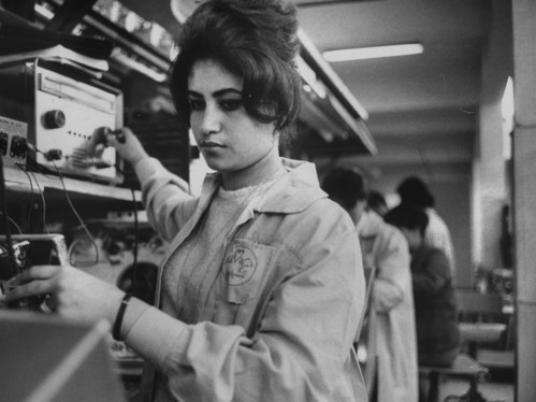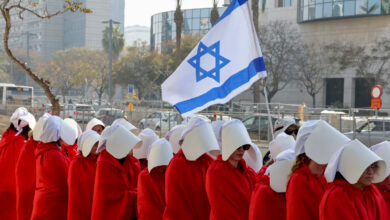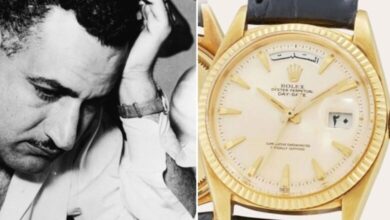
Grey Villet (1927–2000), a South African-born photographer, was in Cairo in 1963 to capture scenes of Egypt under late President Gamal Abdel Nasser. His photographs offer an interesting window into a decade of change for Egyptian women.
In one photo, a female student stands with two of her colleagues at Cairo University. In another, a young woman works at the newly established state TV. The caption reads, “An Egyptian state-owned TV set manufacturing plant, where out of 600 employees nearly half are women.”
Villet wasn’t the only one to capture such images where women are clearly visible in the public sphere. Other photographers, some non-Egyptians, snapped similar images with great interest. Also, the archival website of Nasser’s life, designed by Bibliotheca Alexandrina, also show increasing numbers of women in the 1960s were present in the public sphere, and many were claiming equal rights with men.
Movies of era also demonstrate that significant social changes were taking place between the genders.
In one memorable scene in Egyptian cinema, popular Egyptian actress Soad Hosni tried to convince her male colleagues, during their summer vacation at the Mediterranean, that cleaning and cooking should be conducted equally between men and women. When they refused, she said loudly, “Have you forgotten that we live in the era of equality?”
The scene was from the 1968 movie “Al-Zawaj 'ala al-Tariqa al-Haditha” (Marriage on the Modern Way). The movie portrayed a generational gap between those who lived under the monarchy and the new generation, which was born to see Egypt as an independent country. Money shouldn’t be the price for a groom, Salah Karim, the movie director, wanted to tell his audience. Marriage should be based on the compatibility of education and dreams of a couple.
The issue of equality was put in a different context by Fateen Abdel Waahab, who directed the 1966 film “Merati Modeer Aam” (My Wife is a General Manager). The 1966 comedy showed the anxiety of a man who had to grapple with the fact that his wife is his general manager in a state-owned company.
These movies and their promotion of gender equality weren’t random. Indeed, Egypt in the 1960s was witnessing a significant and unprecedented conversation about gender equality. In popular culture movies, songs, newspapers, magazines and later state TV, the issue of gender equality was highly debated. The state often sponsored these discussions; Nasser knew that if women could work in the public sphere, they would be of more help in building his socialist society. What emerged was a new state that supported advocacy for gender issues, which had been previously confined to civil society.
Strangely enough, this decade in particular hasn’t been studied carefully in terms of how women lived and thought. Most conversations, impressions or even academic scholarship have been mostly interested in the condition of women in the first half of the 20th century. The lack of documentation only makes the following question all the more puzzling: How did Nasser’s authoritarian regime more than 40 years ago manage to achieve such a level of women’s participation in society and foster such a debate on women’s rights?
The failure of the liberal era
When Egypt’s pioneer women’s activist Hoda Shaarawi died in 1947, her death marked the end of an era. She had largely driven the discussion on the question of the Egyptian woman, through the Egyptian Feminist Union, which she established.
In her memoir, translated as “Harem Years,” Shaarawi detailed her battle to promote women’s presence in the public sphere while trying to reform the conditions ruling women in the private sphere. Shaarawi was widely respected and inspired generations of women to pursue a struggle in advancing women’s rights.
During the 1930s and after, scores of women-related NGOs were established. Secondary schools were opened for women specifically. Egypt’s main university, Fouad I (now Cairo University), accepted Soheir al-Qalamawy in 1929 as the first female student. Later, Qalamawy became a lecturer at the university, paving the way to other women to hold the same post, such as Aisha Abd al-Rahman. Women’s magazines were published and daily newspapers allocated abundant content to discuss issues of marriage, divorce and political rights for women.
However, such achievements and transformations are misleading — they are not the complete picture.
Women’s participation in the main political arena was nonexistent. Their contribution to the work force was limited and laws organizing their labor were arbitrary. Women possessed few economic rights. The status of women in rural areas was also problematic, despite the fact that some secondary schools were established in Upper Egypt’s Assiut in 1932 and Lower Egypt’s Tanta in 1933.
An ongoing struggle over changing personal status laws had introduced only minor changes. When some activists repeated the call to grant women the rights of suffrage, the religious authority published a manifesto against equality.
In April 1952, Egyptian Grand Mufti Sheikh Hassanein Makhlouf issued a fatwa saying that women are not entitled to vote in parliamentary elections because they are incompetent.
Most of the political forces in the country failed to challenge the fatwa and Egypt’s leading political force, the liberal Wafd Party, wasn’t interested in raising the issue of women suffrage.
The unresolved question of women was one of many issues that drove the plea for colonial independence, which lead the Free Officers Movement to seize power in July 1952.
For around two years, the military rulers had full control over the country. They ousted King Farouk, canceled the monarchy, removed General Mohamed Naguib, the leader of the initial coup d’etat, from the presidency and finally cracked down on all political forces of the old regime whether they were liberal, Islamists or leftists.
And for women, the military officers, without any hesitation, dissolved all their NGOs with any political aspirations. They dissolved the Egyptian Feminist Union and Bint al-Nil (the Daughter of the Nile Union) established by Durriyyah Shafīq in 1948.
The drastic measures in controlling the country by the officers were largely un-challenged, though some groups did stand up to the crackdown. At the Journalists Syndicate on 12 March 1954, Shafiq, along with eight other activists, declared their resistance to the officers. They also staged a hunger strike to force Egypt’s military rulers to give women the right to vote.
The strike was heavily covered by the press with contradicting views. Some argued that women’s suffrage is incompatible with ‘women’s nature,’ as one of the Free Officers stated in 1954. Later, in 1970, this officer, Anwar Sadat, would become the president of Egypt. Other views published in Egypt’s flagship daily Al-Ahram defended the rights for women to vote.
A new era for women’s rights
Within two years, the issue was resolved. The 1956 Egyptian Constitution explicitly stated the equality of opportunity between men and women. Egyptian women were granted the right to vote and in the first elected parliament after the revolution of 1952, five women ran in the elections and two of them garnered seats.
Also, in 1959, women gained the right to equal pay and pensions with men, along with a bundle of social and economic rights.
Moreover, the state for the first time acknowledged that a genuine role is expected from women in the building of the new post-colonial Egypt. In 1962, when Nasser issued the Charter of National Action, it said that women “should be freed from all social barriers.”
In the same year, Hekmat Abu Zeid was chosen as Egypt’s first female minister, serving as minister of social affairs. Later, women were also appointed as ambassadors and high-ranking government employees.
The growing public sector had pulled many women into the workforce, especially with the establishment of new universities outside Cairo.
Benefiting from an administrative decree in 1954 in which talented students could pay lesser tuition fees, female students flocked to Egyptian universities.
By the early 1960s, females students were in the same number as that of males students in some faculties.
Scores of women obtained their post-graduate degrees from Egypt and abroad. Horiya Megahed was the first female academic to get a PhD in political science in 1956.
But such state initiatives to promote women weren’t without shortcomings. Activist Asmaa Halem wrote in 1965 that the labor minister had prevented women from working in certain jobs, such as in wineries. The judiciary was also a place where the conservative view of women’s role was manifested, since they were prevented from working in remote areas.
With the state’s slow withdrawal from its social commitments since the Nasser era, and with the gradual embracing of a free market economy in the 1970s, the issue of women rights was sidestepped, prompting, once again, a new struggle for Egypt’s women.




